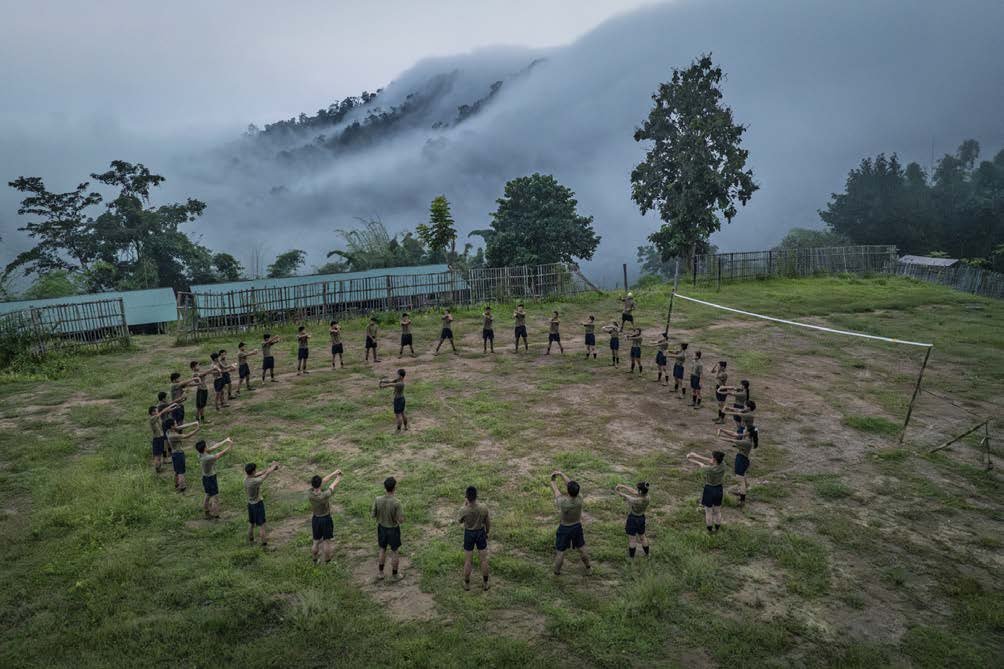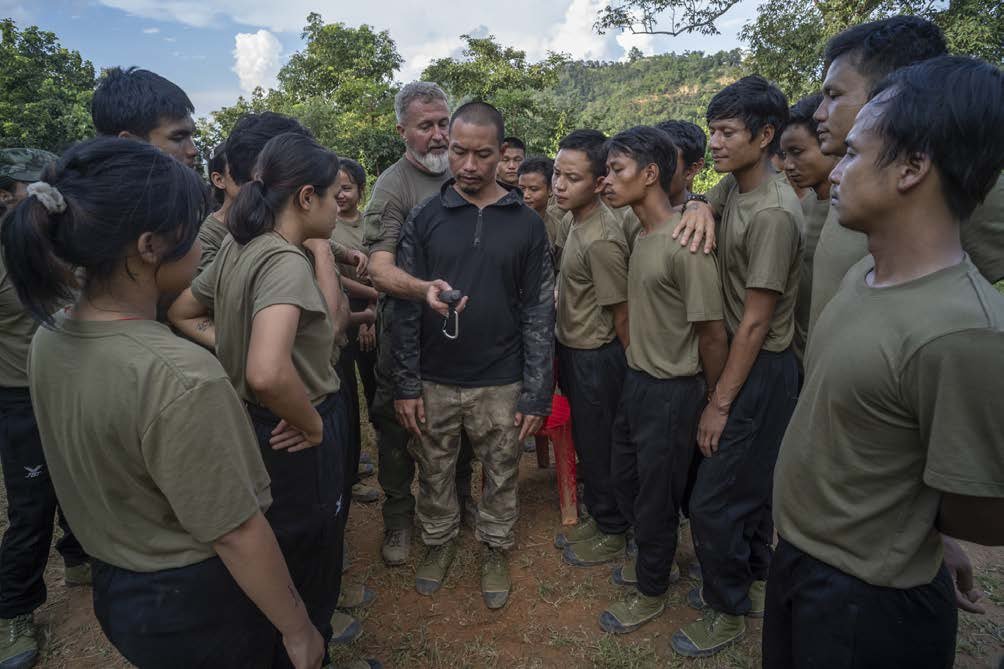GC Funds Kerenni Wildlife Protection Initiative Field Training—W1C Report 2024
Introduction
Wildlife 1 Conservancy, a Thai-registered NGO, has been involved in several sensitive wildlife conservation projects across Asia since 2010. Our objective is to protect biodiversity and counter illegal wildlife trade and trafficking through strengthening the capacity and capabilities of agencies and institutions tasked with this purpose.
The Karenni Wildlife Protection Initiative (KWPI) is an initiative between Wildlife 1 Conservancy and the Karenni Forestry Department (KFD). W1C is the project manager and technical consultant, with the major stakeholder being the KFD.
Photo ©shutterstock.com/R. Bociaga
Overview—Understanding How to Turn A New Leaf
Illicit economies in Myanmar are dramatically upscaling amidst the massive security and economic fallout of the February 2021 military coup. An acute lack of capacity and effective management and protection systems has severely threatened biodiversity, degrading valuable natural resources.
The extreme decentralization of northern and eastern Myanmar makes the trafficking, trade, and consumption of wildlife difficult to monitor and control. Conservation projects and government programs at the national level are effectively nonfunctional due to conflict, corruption, and political uncertainty.
Prior to the military takeover, the government and military were also involved in illegal extraction practices, particularly in the context of natural resources such as gold, jade, and timber. The country’s mining industry has been associated with extreme environmental degradation and human rights abuses. Following the military takeover in 2021 and the subsequent escalation of civil conflict, Myanmar's diverse and highly valuable ecosystems are encountering heightened threats due to an upsurge in illicit logging, poaching, and mining activities.
Wildcat species are frequently found in the Asian black market. Photo ©shutterstock.com
Wildlife trade and trafficking are rampant and unregulated due to booming demand from east Asian black markets.
The crossover potential of zoonotic disease in this trade is severe. Myanmar now constitutes a critical nexus for wildlife trafficking. The large volume of trafficking and consumption of wildlife also presents a significant threat to biodiversity and human health in the region and beyond.
In the two decades prior to 2022, the country lost a shocking 7,030 km² of humid primary forest and 11% of all its tree cover.
As an autonomous state, Karenni State preserves vast areas of high-value biodiversity that remain unexplored. The KWPI is an initiative that assists the KFD in the development of natural resource governance and capacity building across conservation, enforcement, intelligence, and research.
Mission and Outcomes
The MWPI aims to protect biodiversity and prevent illegal wildlife trafficking by strengthening the capacity and operational capabilities of local non-state governing authorities in Myanmar.
The initiative addresses threats posed by the inability of the Myanmar military government to prevent the poaching of endangered species and the destruction of critically important biodiversity.
The primary objective is to enhance the capacity of local actors by developing their enforcement capabilities to sustainably manage protected areas. The approach employed by the MWPI entails consultation with local actors to assist them in developing their capacity.
The project offers programs to address diverse threats presented by conflict, lack of regulation, corruption, enforcement, and monitoring of the illegal wildlife trade in Myanmar, including:
• Extinction of endangered species by wildlife poachers and traffickers
• The destruction of primary habitat and natural resources
• Spread of zoonotic diseases
The MWPI provides training for local groups to develop the following capacities:
• Delineating protected areas
• Empower the enforcement capacity of local actors through training and deployment of wildlife protection units.
• Intelligence on illegal wildlife trafficking
• Monitoring the risks of zoonotic diseases
The first phase of the initiative involves training and capacity building to establish Karenni Wildlife Protection Units (KWPU) to manage protected areas in Karenni State. The KFD is the governing body responsible for managing Karenni State forests and natural resources. Wildlife 1 Conservancy is conducting capacity building by providing logistical support, training, and operational capacity to enable the deployment of Karenni Wildlife Protection Units.
The long-term goals of the MWPI are to provide the resources and capacity for local actors to effectively manage conflict and post-conflict development that protects biodiversity and endangered species and to raise awareness of the many challenges posed by the wildlife trade.
Training Presented
All training sessions were thoroughly observed, and feedback was provided. Practical exercises, conducted nearby due to the current political situation in the region, were closely aligned with the skills transfer topics. Role-playing was employed to facilitate interactive learning, prompting learners to think creatively and apply theoretical knowledge to practical tasks.
The training encouraged active participation, requiring learners to engage in discussions and collaborate with trainers. Their classroom activities and real-world applications were directly tied to Field Ranger responsibilities. This method promoted extensive interaction and ensured the training’s relevance to operational demands.
Skills Transferred
Trainees received numerous lessons to get them ready for field activity, including drills every evening, physical training and personal fitness, basic first aid and trauma, tracking procedures, follow-up procedures and hand signals, arrest procedures and arrest tactics, patrol methods and formations, hand signals and communications, firearm handling, use, and maintenance, planning and manning observation posts (OPs), planning and manning waylays (arrest techniques), understanding conservation ethics, how to ID and monitor wildlife, camouflage and concealment techniques, and navigation and map reading.
Summary
The course was conducted in a paramilitary style, maintaining strict discipline throughout. Learners were required to conduct themselves with maturity and discipline. The principles of explain, demonstrate, and practice were utilized, and learners who successfully completed the training showed a vast improvement. Those who completed the course adapted well to the training, emerging as well-disciplined Field Rangers. The practical deployments were successful, and the knowledge transfer enabled them to perform their tasks effectively and efficiently. Significant progress was observed from the start to the end of the course. Overall, the course was a success, and there are high expectations for the graduates.

















